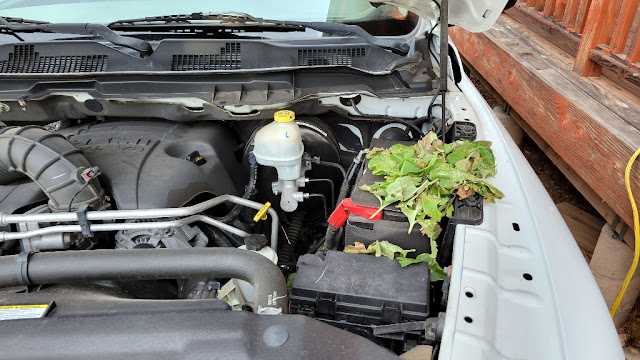Ceiling Insulation for the LittleHouse
Ceiling Insulation for the LittleHouse
by rdpecken on Jun.02, 2020, under Insulation
Wow, it’s been a while since we’ve done any work at the ranch (other than normal maintenance, such as battery maintenance…)
Now that we have finished our kitchen remodeling at the house down in Mesa, we have the time and resources to begin work again at the ranch. The first major project to start back up is finishing the insulation inside of the LittleHouse.
We started work on the ceiling insulation in April, and continued in May.They were kind of difficult to install, due to the 45 degree bend at the bottom, to meet up with the vertical bird board vent holes. We tried a couple of different installation methods, and settled on just a gradual bend toward the bottom, rather than a sharp bend.
A surprise for me was that I only used 2×6 lumber for the ceiling rafters. I had thought that I used 2×8’s there to allow for more insulation in the ceiling, but on measuring it, found only 5-1/2″ of space. That was a disappointment, and forced us to go with insulation foam board, instead of bat-type insulation we had hoped to use. That way we can get pretty good R-values still, without needing to go all the way to spray foam insulation.
We ended up buying a variety of thicknesses of R-Max polyiso foam insulation boards from Home Depot. The 2″ thick insulation had an R-value of R-13.1, with 1″ thick providing R-6, and the 1/2″ providing R-3.2.
Note: When transporting these, they need to be strapped down really well, with plywood or cardboard covering a good bit of the top front. On the way home from Home Depot, we had the 1/2″ thick foam boards on the top, and a couple of them snapped off a foot or two off the end. So when we prepared for the trip to the ranch, we covered the front with a tarp, to prevent the wind from getting under them. This worked fine for us.
We packed as much of the foam insulation board as would fit into the rafter bays, usually 4-1/2″ total. Some of the bays had structural items that prevented the full 4-1/2″, and ended up with about 3″ in some spots, for a foot or so.
We used some short pieces of 1/2″ plywood to hold the panels in place until we get the rest of the job done. We found that a couple of panels were falling down while we were pounding on other panels to get them into place, and the plywood pieces kept them in place for us.
Once all of the bays were filled with insulation foam board, we went back and filled in the cracks and voids with “Great Stuff” spray foam from the cans. I don’t know where they got that name, but it is definitely not Great Stuff! It was very messy and hard to deal with. But we got through it, and feel pretty good about the ceiling insulation at this point.
Next, we will add vapor barrier to the underside of the insulation, to be followed with a sort of ship lap type covering.
Stay tuned for more…








Comments
Post a Comment